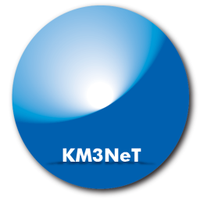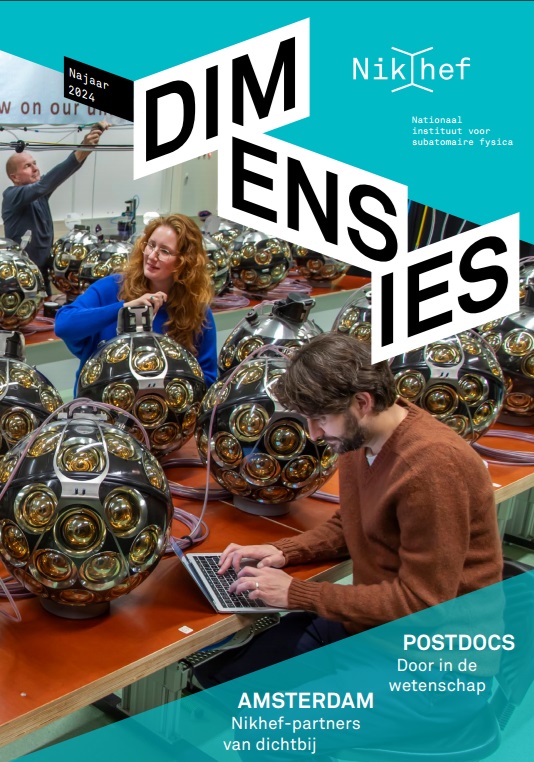
National Institute for Subatomic Physics Nikhef
@_nikhef
Nikhef researchers study the interactions and structure of all elementary particles and fields at the smallest distance scale and the highest attainable energy.
ID: 350821109
http://www.nikhef.nl 08-08-2011 10:56:19
5,5K Tweet
4,4K Takipçi
383 Takip Edilen

Step 4 of building a KM3NeT Neutrino Digital Optical Module (DOM). We follow the entire build at National Institute for Subatomic Physics Nikhef from 2 empty glass hemispheres to a complete detector with 31 PMTs to measure Cherenkov light together with 17 other DOMs between 2.5-3.5 km below the Mediterranean sea level.

Step 5 of building a KM3NeT Neutrino Digital Optical Module (DOM). In this episode we see the pre-assembly of the fiber tray and the fusion splicing process of two optical fibers. We follow the entire build at National Institute for Subatomic Physics Nikhef from 2 empty glass hemispheres to a complete detector.

Step 6 of building a KM3NeT Neutrino Digital Optical Module (DOM) National Institute for Subatomic Physics Nikhef . In this episode we see the assembly of 12 PMTs (PhotoMultiplier Tubes) in the top hemisphere PMT-structure. This plastic injection molded PMT-structure is developed in collaboration with Hogeschool Windesheim (inactief)

Great discussion with student from Universiteit Leiden's Science Communication & Society master track on investigating use of metaphors in our field by scientists, National Institute for Subatomic Physics Nikhef, CERN, ATLAS Experiment & journalists. New world for Dr Clara Nellist and me to discover as supervisors. More later!

A huge insulated transport box (3x3x3.5m - 1800 kg) arrived National Institute for Subatomic Physics Nikhef for the transport of the CERN #ATLAS ITK ENDCAP to DESY (Deutsch) next week. The box is insulated all around on the inside with 8.5 cm thick vacuum insulation panels.

Last Friday we visited National Institute for Subatomic Physics Nikhef, a historic cornerstone of European Internet history and a vital hub in our network. As one of the places where the Internet in Europe took its first steps, Nikhef continues to play a critical role in enabling fast, secure, and reliable connections


Step 7 of building a KM3NeT Neutrino Digital Optical Module (DOM) National Institute for Subatomic Physics Nikhef In this episode we see the assembly of the bottom PMT-structure (3D printed in nylon) with 19😲PMTs (PhotoMultiplier Tubes).

The CERN #ATLAS ITK ENDCAP is now placed on 12 vibration dampers at National Institute for Subatomic Physics Nikhef. Just before closing the insulated transport box (by mounting the 5 enormous plates by Hasenkamp Transporte) shock sensors are now being mounted on frame & ENDCAP. Transported to DESY (Deutsch) is close by 🚀

Step 8 of building a KM3NeT Neutrino Digital Optical Module (DOM) National Institute for Subatomic Physics Nikhef In this episode we see the pre-assembly of the PMTs (PhotoMultiplier Tubes) before we do functional tests to be sure everything works before the PMTs are finally fixed with optical gel.

Step 9 of building a KM3NeT Neutrino Digital Optical Module (DOM) National Institute for Subatomic Physics Nikhef In this episode we see sealing of the top PMT-structure to the cooling mushroom and putting the highly transparent optical gel between the PMTs and hemisphere to permanently fixed the 31 PMTs in the hemisphere.

Morgen komt de 12e editie van Nikhef-magazine DIMENSIES uit! Op de cover onze KM3NeT-onderzoekers en technici met de Digital Optical Modules (DOM's) van de KM3NeT-neutrinodetector. Deze worden o.a. op Nikhef geproduceerd. KM3NeT Neutrino


Click to see the real deal ➡️ This #PhotoOfTheWeek, we look at a mock-up of the ATLAS Experiment detector, assembled by Jan Brajer from the ATLAS Detector Operation group, in comparison with the real-size detector. These images show a model of ATLAS composed of 400 parts, a




Step 10 of building a KM3NeT Neutrino Digital Optical Module (DOM) National Institute for Subatomic Physics Nikhef In this episode we see the closing of a DOM. Assembly of a DOM is now ready and will be stored in a dark cabinet to be assembled later in the assembly together with 18 other DOMs into a Detector Unit (DU).










